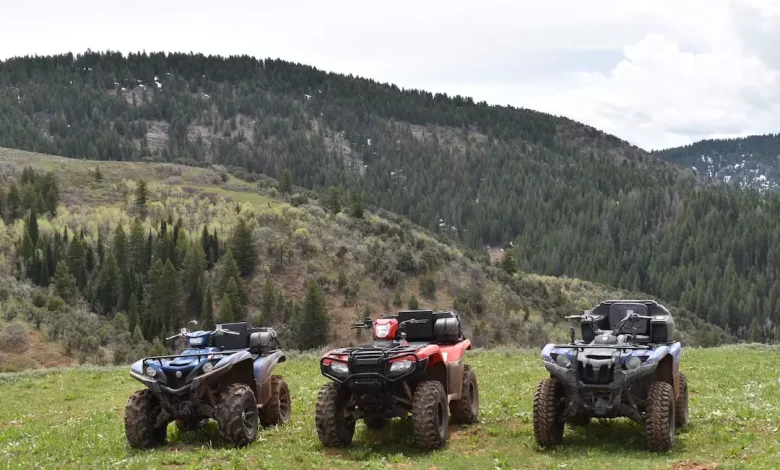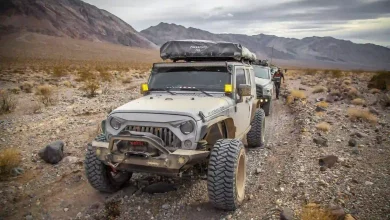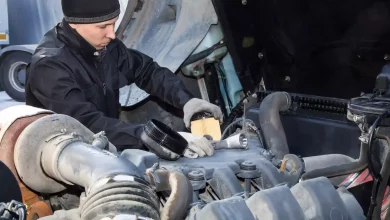UTV vs ATV: What’s the Difference?

The global ATV and UTV market was valued at $9.22 billion and is expected to grow at a compound annual growth rate of 6.80%.
When it comes to off road vehicles, there are two options: UTVs and ATVs. Both vehicles provide great experiences and thrilling rides over varied terrain. They differ in design, usefulness, and optimal use cases.
We’ll look at the differences between a UTV vs ATV. It also showcases their distinct characteristics and discusses the best circumstances for each, whether you’re an enthusiastic off-roader or renting one for an upcoming excursion.
Continue reading to learn about the differences between UTVs and ATVs.
Definitions and Basics
UTVs, often known as side-by-sides, are four or six-wheeled vehicles that can carry several passengers. For safety, they frequently have a cabin with a steering wheel, seats, seatbelts, and a roll cage. UTVs are designed and used for labor rather than leisure.
They are massive, strong, capable of seating people side by side, and have plenty of storage room. They’re used to transport tools and supplies in places where a vehicle would be unusable or impossible. ATVs, on the other hand, are commonly three or four-wheeled single-rider vehicles.
They often feature steering handlebars and require the rider to straddle the seat. ATVs, or all-terrain vehicles, is an off-road vehicle. They typically have four wheels and are smaller and lighter than UTVs.
Design and Size
In comparison to ATVs, UTVs are bigger and more roomy. They have a larger sitting space and can adapt many passengers, making them perfect for group expeditions or family vacations. ATVs are small, which makes them ideal for dealing with narrow tracks and maneuvering around tight turns.
Their smaller stature provides for more agility and maneuverability. The size difference between UTVs and ATVs is one of the most noticeable. UTVs, or Utility Task Vehicles, are more extensive than ATVs but are built to handle greater loads and traverse more varied terrain.
UTVs often have four-wheel drive and extra space for passengers and goods. Furthermore, UTVs have significantly superior suspension and are suited for faster speeds. ATVs, or All-Terrain Vehicles, are substantially smaller and intended for leisure riding.
ATVs are lightweight vehicles with three or four wheels. While ATVs may transport a passenger, they are best suited for a single rider. ATVs are built for more mild terrain than UTVs.
UTVs provide better power, size, and durability than ATVs and are better suited for heavier loads and rougher terrain.
Terrain Capability
UTVs are designed to tackle the terrain, including harsh off-road situations. They have firm suspension systems, increased ground clearance, and long-lasting tires. It allows them to traverse rigid terrain.
ATVs thrive on navigating challenging terrain. It also includes muddy paths, rocky surfaces, and steep inclines. Their lightweight construction improves their ability to handle rough terrain.
Capacity for Payload and Storage
One of the primary benefits of UTVs is their capacity to transport heavy loads. UTVs are favored for carrying gear, supplies, and tools. It is also due to their storage capacity and ability to tow trailers.
While ATVs are not intended to carry large loads, they usually include front and rear racks for carrying fewer goods.
Also read about RJ125552 Fort Rhodes
Security Features
UTVs focus on passenger safety, including roll cages, seat belts, and doors to protect passengers in the case of a rollover or accident. UTVs are a popular choice for families and people looking for protection. ATVs lack several of the safety measures seen in UTVs.
Riders may improve their safety by using suitable protective gear, like helmets and padded clothes.
Cost
When purchasing a vehicle, the budget is an essential consideration. An ATV is often less expensive than a UTV since a UTV has extra equipment. If you have saved up for a new ATV or UTV, you may want to reconsider your budget because a standard off-road vehicle may fall short of your expectations.
Performance upgrades might cost several hundred dollars more than the MSRP. When compared to UTVs, ATVs are often less expensive. The cost of an ATV varies depending on criteria such as brand, model, engine size, amenities, and condition.
ATVs for beginners can start at $2,000, but more advanced versions or customized vehicles can cost $10,000 or more. UTVs may range from $5,000 for entry-level versions to $30,000 or more for high-end ones. It is crucial to remember that these pricing ranges are only estimates.
The cost may vary based on criteria and the location of the dealer.
Continuing expenditures should be incorporated into the entire cost of owning either a UTV or an ATV.
Best Uses for UTVs and ATVs
UTVs are ideal for recreational activities involving families or groups of friends. UTV rentals allow you to explore trails, go on camping vacations, and take beautiful drives in beautiful environments. You can look for UTV rentals that provide top-notch services.
ATV rentals are ideal for adrenaline seekers and lone riders eager to conquer off-road tracks and handle challenging terrain. ATV trips are perfect for adrenaline rushes and exploring inaccessible locations. They have a wide range of practical and recreational purposes.
Here are a few of the top applications for UTVs and ATVs:
Recreation
UTVs and ATVs are popular leisure vehicles. They’re perfect for exploring off-road paths and cycling through woods, dunes, and muddy terrain. Many individuals like off-roading as a pastime or a source of adventure and thrills.
Hunting and Fishing
UTVs and ATVs are excellent hunting and fishing gear. They can also be outfitted with specialist attachments like rifle racks, camouflage coverings, and fishing rod holders.
Agricultural and Farming
UTVs and ATVs are often used in farming and agriculture. They provide easy mobility, letting farmers transfer tools, supplies, and equipment to different places. They are handy for jobs and general property upkeep.
Landscaping and Groundskeeping
UTVs and ATVs are useful for landscapers and groundskeepers. They make moving tools, mulch, plants, and other things around properties or complex terrain easier. It is also used to mow the grass on uneven or steep slopes.
Understanding the Differences Between UTV vs ATV
Understanding these guides to UTV vs ATV is essential. It is vital to grasp which is most suited to your needs. UTVs are ideal for traveling around the property.
It also provides a thrilling blend of speed and power. Include a utility terrain vehicle in your off-road activities, and lead to your local dealership to discover more!
Did you find this article helpful? Check out the rest of our blog for more!






